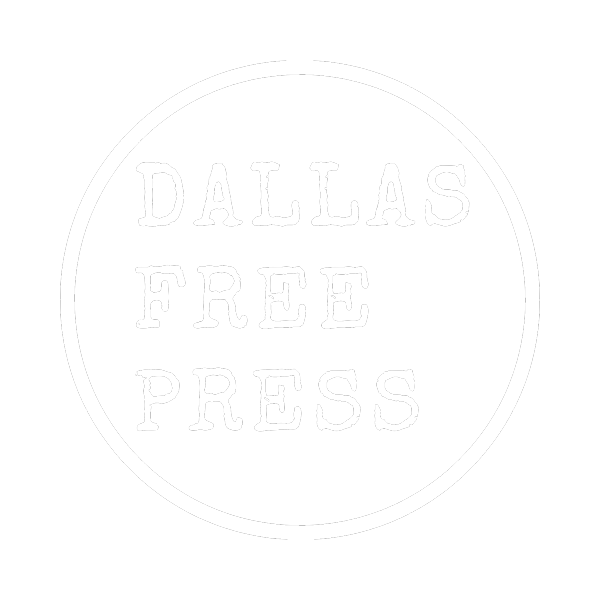Pool amenities in West Dallas: Fading ‘entusiasmo,’ but changes are coming
Carmen Martinez reminisces over memories of children walking down North Winnetka Avenue to the community pool at Hattie Rankin Moore Park for festivities and swimming classes until it closed, four years ago.
Two of the city’s community pools are located in West Dallas, one on the east side in Hattie Rankin Moore Park next to the Anita Martinez Recreation Center in Los Altos, and one on the west side at Jaycee Zaragoza Recreation Center in Ledbetter Eagle Ford. But this summer, one of the hottest on record, West Dallas residents went weeks without a pool to cool them off while both were shut down.
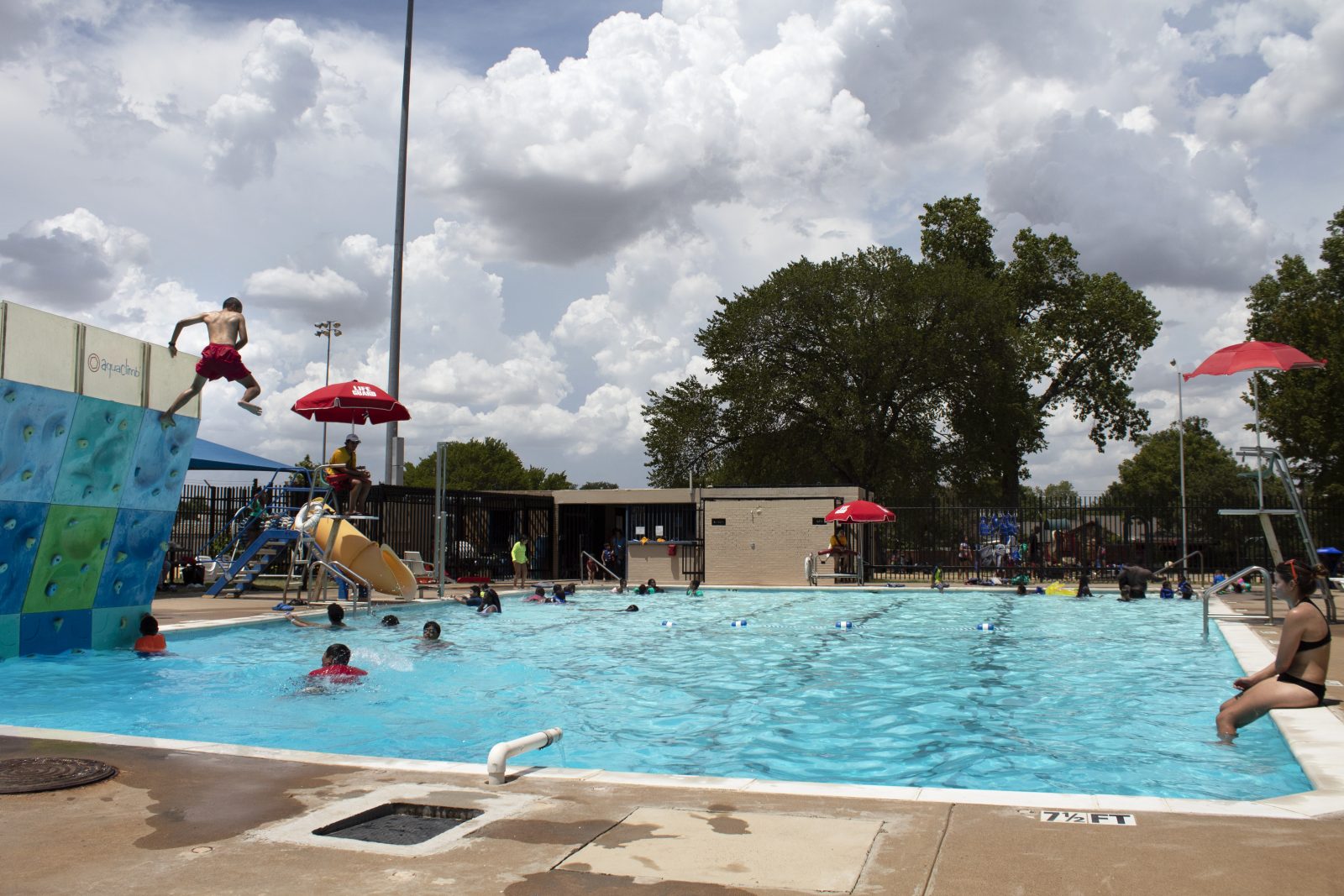
“It was a beautiful enthusiasm and little by little it faded away,” Martinez said in Spanish. “Because they would close the pools as they pleased. We never knew when they were going to close [the pools]. They took away our enthusiasm little by little.”
The only other publicly accessible pool in West Dallas is at the former Lakewest YMCA, which permanently closed in 2020. Both the pool and the space still sit empty.
Expensive fixes and limited lifeguards
At Jaycee Zaragoza, the fiberglass coating was exposed, so the pool needed a coat of poly paint and maintenance to become operational, says Raul Robles, coordinator of Dallas Aquatics.
“Within a week and a half, we were able to purchase what we needed, put a team [together], put on another coat, get everything back to standard on the chemical balance and get it back in operation,” Robles says.
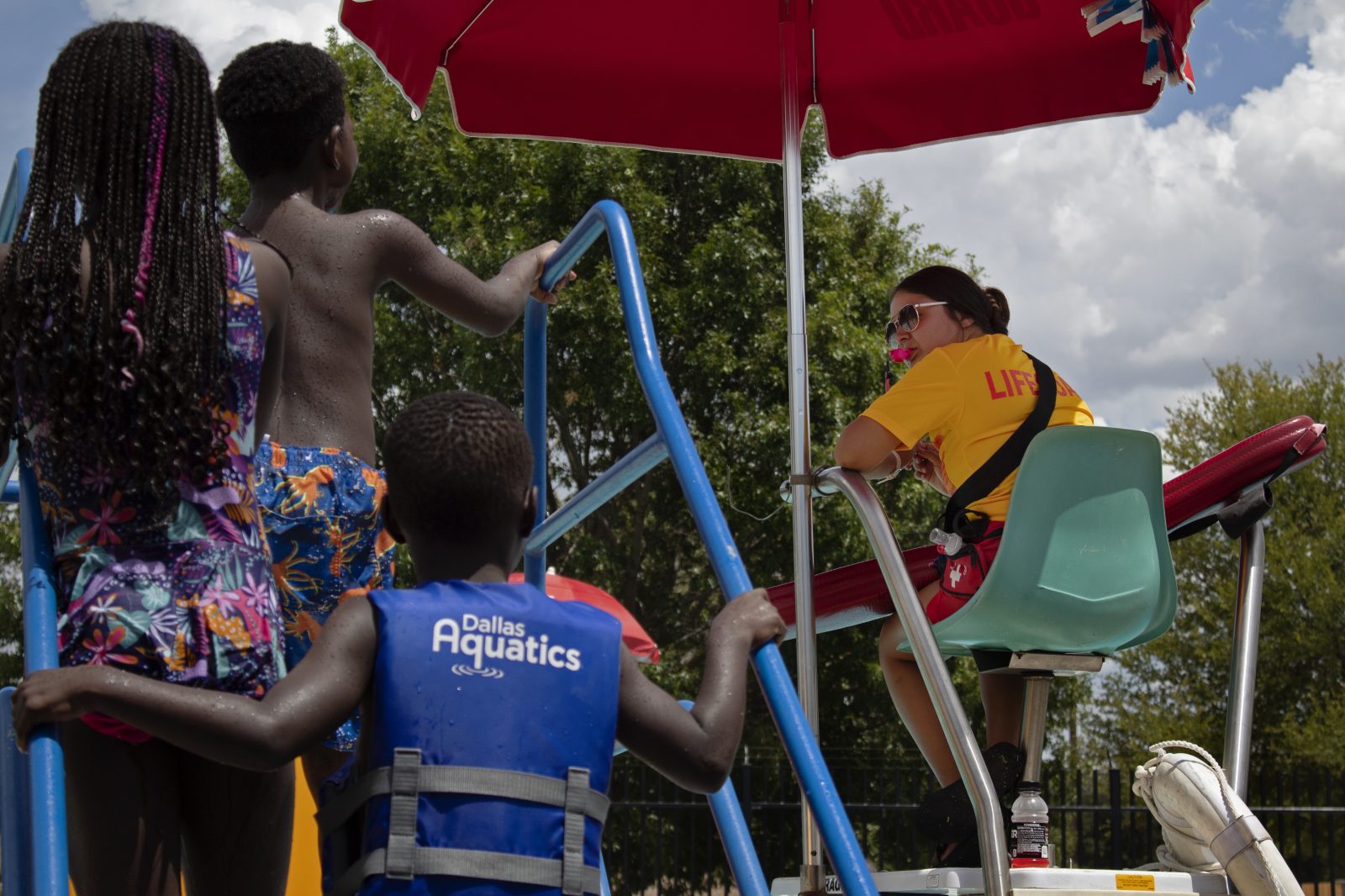
At least 350 people celebrated its reopening at the free Fun in the Sun event in late July, hosted by Ledbetter Eagle Ford Community Organization Youth Program in partnership with Dallas Aquatics. The Hattie R. Moore community pool, however, continues to be an unused crevasse of concrete taking up space in the park.
Both pools were built the same year, but the degree of damages at the Hattie R. Moore pool in 2017-18 made it far too costly to repair, Robles says. The falling fiberglass from the walls and foundation of the pool structure required an entire dig out and resurfacing project, he says.
Even if both pools had been open all summer, however, access would have been limited. As the temperature climbed to a high of 108 degrees Fahrenheit in July, community pool time at Jaycee Zaragoza decreased from 27 hours to only 17 accessible hours a week.
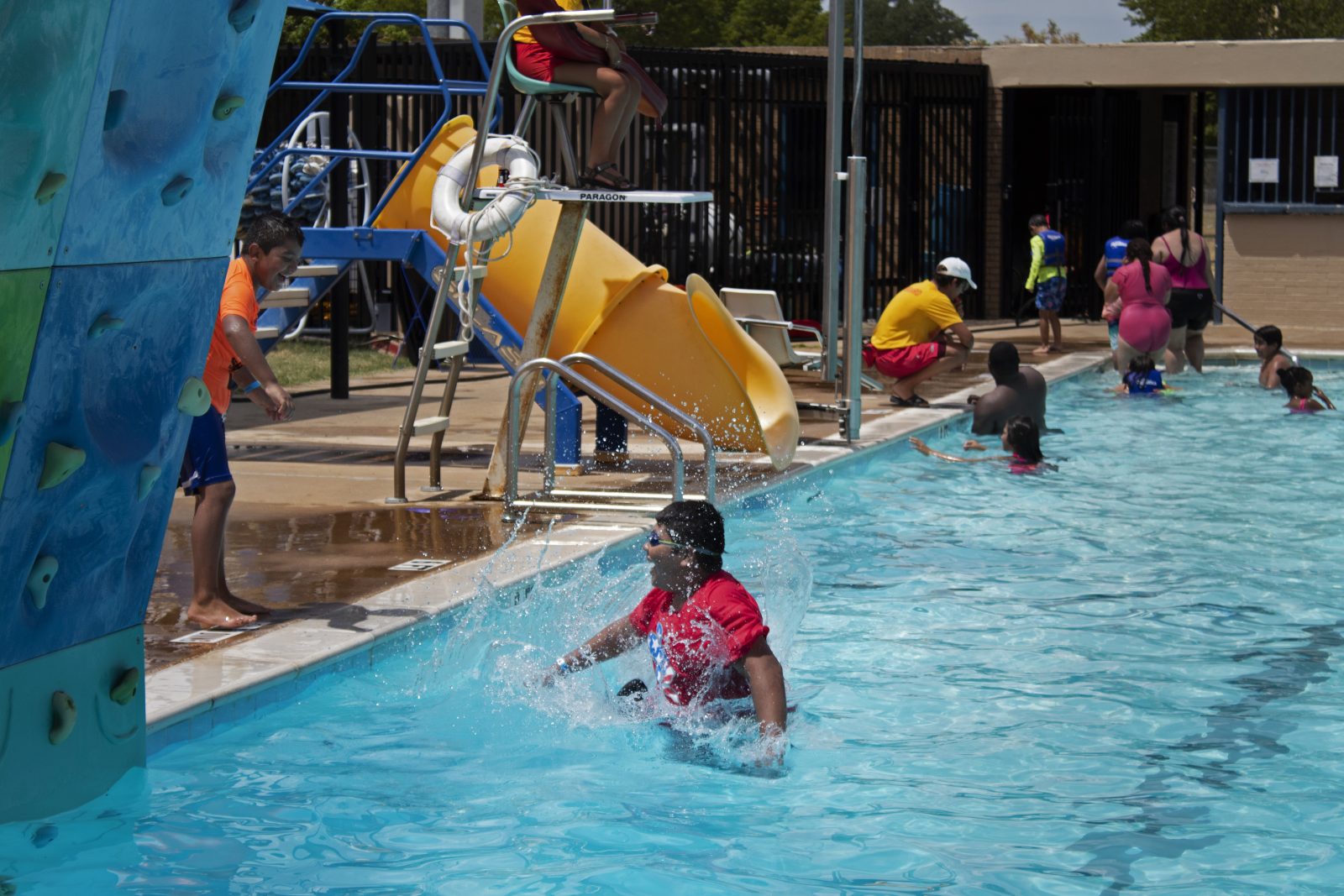
All swimming pools and aquatic centers throughout Dallas had to shift to new hours of operation in July because of a lifeguard shortage, Robles says. Hours were trimmed at both neighborhood pools and the city’s community and regional aquatic centers.
“When we opened, we were one of the only cities in the Metroplex — and one of the few in the country — that opened at full force,” Robles says. “Everything was open on a regular schedule. We opened up four weeks [at] full force. The first time that we made a change on our schedule started on July 5, and that was due to staffing.”
The city’s spraygrounds, however, don’t need lifeguards, and on July 27, “due to extreme heat,” the city expanded sprayground hours to 8 a.m.-8 p.m. daily. Both Jaycee Zaragoza and the Nash-Davis recreation centers in West Dallas have a sprayground.
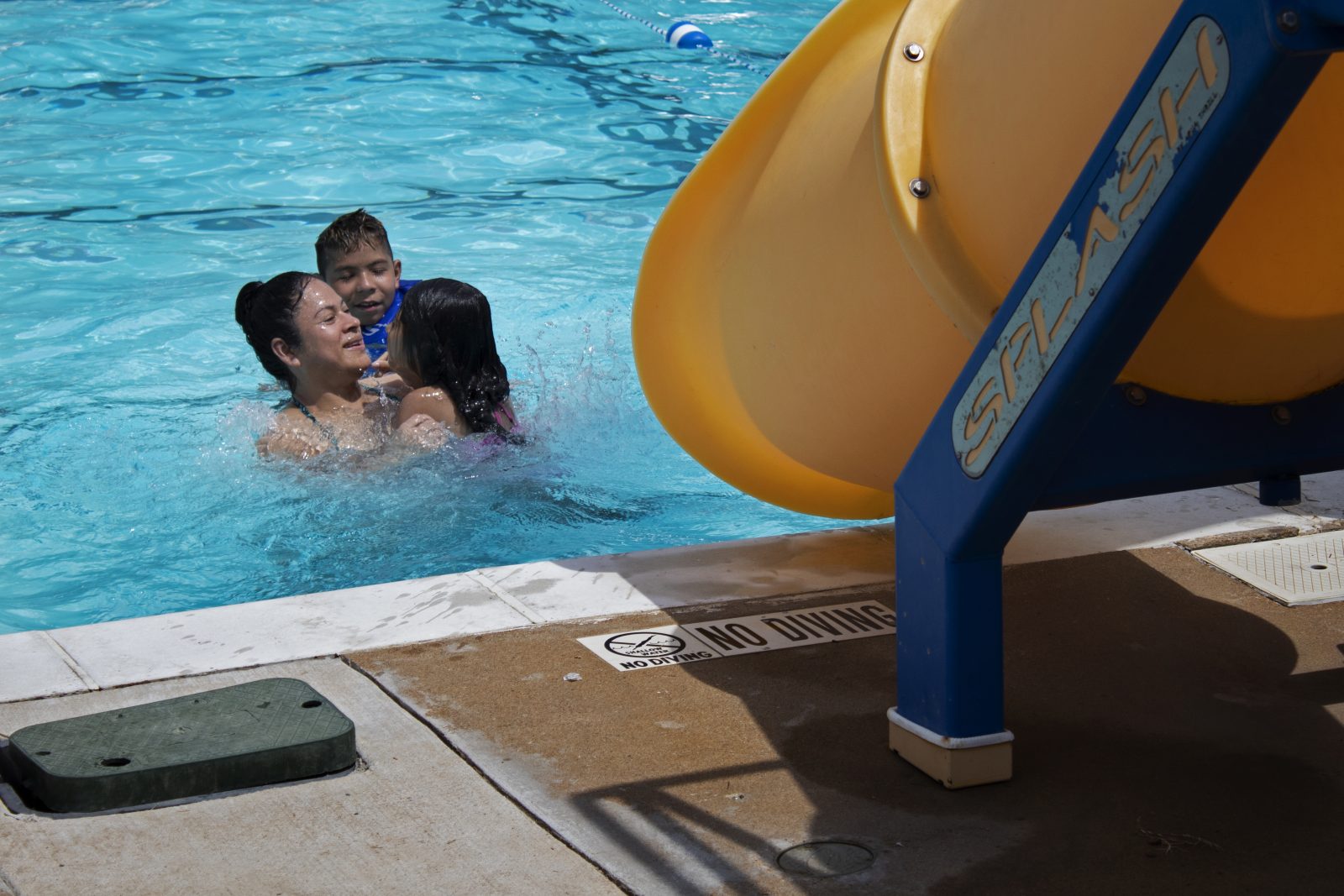
A shift from pools to ‘aquatic centers’
Right before the pandemic, the city hosted a community conversation to create a new master plan for Hattie R. Moore Park. Neither a pool nor a sprayground is part of the new plan, which was shared with community members last week during a public meeting at the Anita Martinez Recreation Center auditorium.
The meeting presentation referenced Dallas’ 2015 Aquatic Master Plan, which marked the beginning of the city’s shift away from community pools and toward “aquatic centers.”
“The traditional pools have reached both physical and functional obsolescence and they do not meet modern recreational aquatic user needs,” the plan states. “The existing pool system is not financially sustainable.”
At the time, both the Jaycee Zaragoza and Hattie R. Moore pools were operational but weren’t heavily used, according to a chart of projected community pool revenues and expenses. At a $3 to $5 admission price, the city estimated that each pool would bring in less than $5,000 annually — a fraction of their costs, which were projected to be more than $50,000 and nearly $90,000, respectively.
Dallas Pools Expenses and Revenue by Dallas Free Press on Scribd
Instead of updating or replacing the city’s 20 community pools, the Park Board and City Council opted to build nine new aquatic centers with amenities such as a lazy river, water slides, a “tot pool” and spray features. None of these were slated for West Dallas; the closest are a “community” or medium-sized aquatic center at Kidd Springs Park in north Oak Cliff, and another at Bachman that hasn’t yet opened.
None of the 11 public input meetings for the 2015 master plan were held in our neighborhood, though feedback from an October 2015 City Council meeting note encouragement for a “neighborhood,” or small, aquatic center in West Dallas. The final plan, however, included only the new sprayground at Nash-Davis.
An updated park without a pool?
At last week’s public meeting, attendees reviewed and discussed two concepts for the future of Hattie R. Moore Park created by Studio Outside. Both concepts focus on making the park more safely accessible and bridging missing connections with West Dallas neighbors.
The dormant pool becomes part of a new civic plaza and is renovated into an amphitheater to serve as the primary feature for visitors to learn and appreciate the history of the neighborhood, incorporating the views into downtown and its skyline.
The newly proposed concepts do not include adequate space for the former pool or to include baseball fields and other amenities voiced during the initial meeting in February 2020, as previously reported by Dallas Free Press. Studio Outside’s presentation at the meeting also noted that the city’s Aquatic Master Plan does not include the reopening of Hattie R. Moore pool or any new water feature at this time.
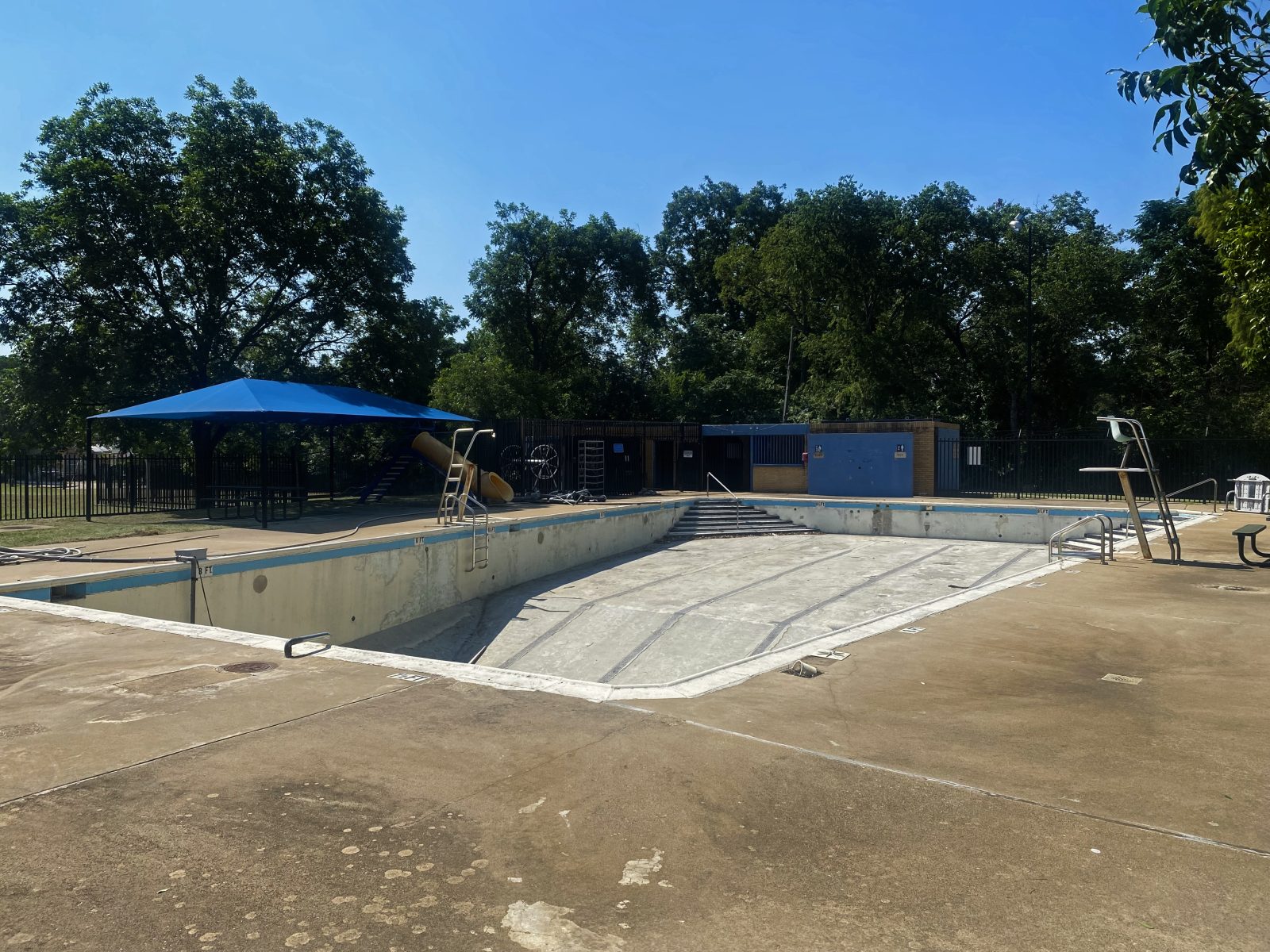
Roughly 30 people attended that initial meeting, but only six neighborhood residents and community organizers attended last week, plus five public officials and two designers from Studio Outside. The community didn’t turn out because people don’t trust the city’s reasoning behind decisions around projects and developments, Martinez said to Jared White, park planning manager, at the meeting.
As neighbors present expressed their desire to keep a pool or aquatic feature in the park, both District 6 Councilman Omar Narvaez and his appointee to the Dallas Park and Recreation Board, Tim Dickey, expressed caution.
“We have a bigger population than we did 30 years ago,” Narvaez said of West Dallas. “We have way more people still moving in. We can’t build something for just your street and that number of people who were here before. We have to build it for what’s coming and anticipate coming here, and this space [Hattie R. Moore Park], unfortunately, just doesn’t hold it.”
A community pool is going to happen; it’s just a matter of where, Narvaez said at the meeting. Benito Juárez Park, a couple of blocks north of the Anita Martinez Recreation Center and Hattie R. Moore Park, was the location most often referenced that could house a new community pool.
“We’ve got to have kids learning to swim,” Dickey told neighbors, and if West Dallas has a community pool, “we can do that.”
The 2015 master plan spelled out land requirements ranging from 2 acres for a small aquatic center to 4 acres for a large one. Hattie R. Moore Park is 3.2 acres, and Benito Juárez Park is 6.1 acres. Comparatively, Tietze Park in East Dallas, where one of the three new small aquatic centers is located, covers 8.2 acres.
“All we’re saying is, this is a small park,” Dickey said of Hattie R. Moore. “Like we said, Benito Juárez, not saying that’s where it is, [but] we can have a nice community pool bigger than this one.”
“Would you all be open to that?” Dickey asked.
It would take about three months to start the process of a Benito Juárez master plan, and the community would need to complete the plan early next year, Narvaez said.
“We’re going to lose an amenity over there” if a pool is added, Narvaez said. The park currently holds a basketball court, a playground, a trail, a plaza and a soccer field, though the field can’t be used by neighbors, only as a rental.
“I don’t know what amenity we’ll lose over there, in Benito Juarez,” Narvaez said. “Y’all have to decide what you’re willing to give up from there — knowing that we’ll bring it over here.”
Information about the proposed Hattie R. Moore master plan can be found on the Dallas Park and Recreation website, and neighbors can give their feedback by taking the survey.
Share This Story, Choose Your Platform!

Jeffrey Ruiz is a Dallas native who focuses on government accountability in his South Dallas and West Dallas reporting as a Report for America corps member. His journalist expertise lies in covering immigrants, the transgender community, the Latino community, poverty and the unhoused. He also enjoys diving into religion and its influence in the community.
When asked why Ruiz chose to write for Dallas Free Press, he says, “Being a part of a local newsroom that serves the community in any way possible with the readers’ best interest in mind is where I always dreamed of being a journalist. I look forward to the day I start writing news stories in Spanish to be translated into English.”
When Ruiz needs a break, you can find him enjoying lunch at his favorite go-to spots: La Tacotrona and Locura Small Bites.
Areas of Expertise:
Government accountability in South Dallas and West Dallas
Location Expertise:
Dallas, TX
Official Title:
Community and Communications Coordinator
Email Address:
jeffrey@dallasfreepress.com





